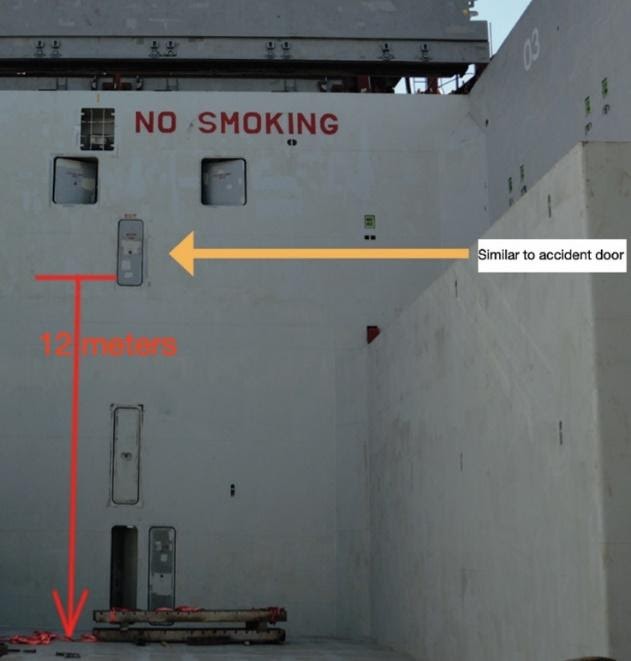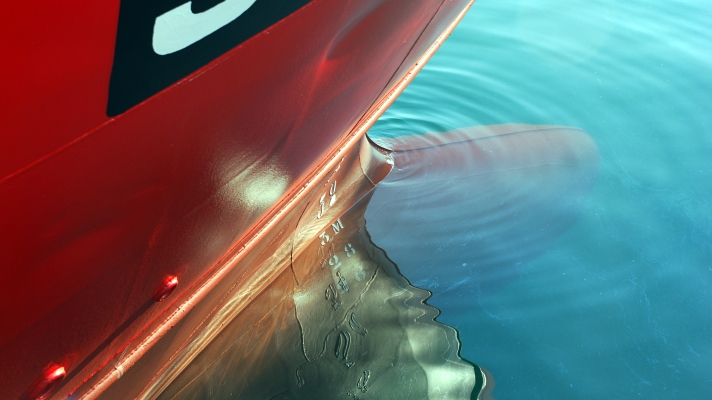In response to an accident in which a crew member died after falling into hold, The Nautical Institute says ships with multiple hold configurations need failsafe precautions. In addition, great care must be taken with doors leading to the hold.
The Nautical Institute gathers reports of maritime accidents and near-misses. It then publishes these so-called Mars Reports (anonymously) to prevent other accidents from happening. A summary of this incident:
A small multi-functional cargo vessel was at anchor and crew were preparing the holds for the next cargo. Earlier in the day, tween-deck pontoons had been removed from hold 1 and the hatches closed. The deck crew discovered there were insufficient stacking cones. One of the men told his colleagues he would look for additional stacking cones because he knew where several were located.

The deckhand searching for the stacking cones descended into the entrance of hold 1. The area lighting, controlled from the bridge, was not switched on, so he was using a torch to see by. Suddenly, two other crew members nearby heard loud screaming coming from hold 1. One of the crew contacted the bridge to have the lighting turned on while the other went to investigate.
The victim was found at the bottom of hold 1 and appeared to be in great pain. It was established that the victim should be transferred as quickly as possible to a shore hospital. Sometime later the victim was lifted on board the port authority boat by crane. Throughout this period the victim was conscious and responsive. Once on shore, the victim was transported to the local hospital, but subsequently succumbed to fatal internal injuries.
Also read: Crew member dies after falling into unprotected hold
Investigation findings
The investigation found, among others, that the victim had entered through one of the door openings in place for use with the tweendecks – even though he knew that hold 1 was now without a tween-deck. Because there was no tween-deck, he fell about 12 metres into the hold. At the moment of the accident, the lighting in the hold was not switched on and, because the hatches were closed, hold 1 was in complete darkness. The lighting in the stairwell was also not switched on and the victim was using a small torch light.
Advice from The Nautical Institute
In addition to the advice already mentioned above, the Institute stresses that if doors are not fully closed and locked prior to the removal of the pontoon decks, then grave accidents can occur, even to crew who are aware of the danger. Other advice given:
- We often become preoccupied with the task at hand. In this case, the victim walked through (or fell through) a door that he knew was unsafe, but had probably not stopped to think, too engrossed in his present task of searching for stacking cones.
- Working in dark areas presents extra risks; always have local lighting illuminated for your work area if possible.
Also read: ‘Crew should carry out on-site risk assessments to avoid unnecessary injury’
Mars Reports
This accident was covered in the Mars Reports, originally published as Mars 202120, that are part of Report Number 342. A selection of this Report has also been published in SWZ|Maritime’s May 2021 issue. The Nautical Institute compiles these reports to help prevent maritime accidents. That is why they are also published on SWZ|Maritime’s website.
More reports are needed to keep the scheme interesting and informative. All reports are read only by the Mars coordinator and are treated in the strictest confidence. To submit a report, please use the Mars report form.








